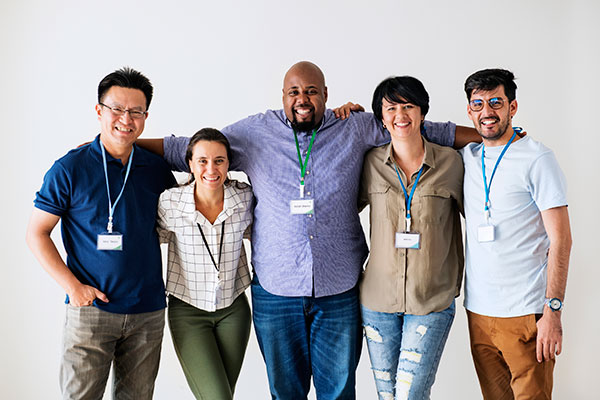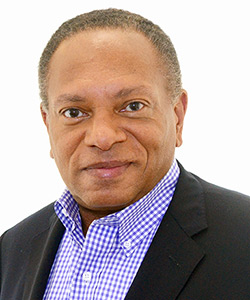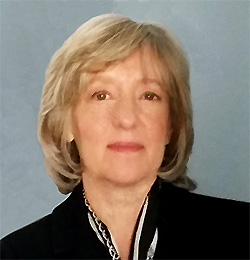By Stephen Young & Barbara Hockfield,
PDJ columnists for 2019
[Note: This article highlights Phase 1 of a three-phased reengineering process for the creation and implementation of Cultural Equity Teams.]

Cultural Equity Teams Wait in the Wings
Whatever you call them—BRGs, ERGs, or affinity groups—these employee organizations have created safe havens and solace for many marginalized groups in the workplace. But have they reached the age of retirement?
Over the years, business resource groups, otherwise known as BRGs, have done great work infusing diverse perspectives into workplace culture. However, in order to ensure a continued and growing impact on culture change as business evolves, has the time come for a seismic shift in structure?
BRGs originated to support the needs of employees who shared common demographic and cultural profiles. At their inception, they served an important purpose. But today, are they keeping pace with a rapidly evolving, multicultural and intersectional landscape?
As workplace culture advances, has their appeal and effectiveness diminished, regardless of their proliferation across businesses?
If these organizations fail to stay in touch with the forward momentum of business, they run the risk of slipping into stasis, irrelevance, or decline. If you fail to evolve, you will diminish.
For decades, the NAACP made undeniable progress for social change. But as culture and technology have evolved around this great cultural institution, its influence has waned.
The SCLC (Southern Christian Leadership Conference), led by the icon himself, Martin Luther King, once played a powerful role in the advancement of the American Civil Rights movement, but is virtually unheard of today.
Affirmative Action played a vital role in improving workplace and academic demographics for African Americans, but is now an initiative relegated to obsolescence.
These, and other notable cultural advancement organizations, made progressive strides, but as global markets, technology, work environments, and multiculturalism evolved, their value and relevance dimmed because they failed to keep with the speed of change.
The first corporate affinity group appeared in 1970 at Xerox Corporation. It was formed as a caucus group to address workplace discrimination and employee development for African Americans. Such affinity groups, known as BENs (Black Employee Networks), rapidly proliferated across the corporate landscape and became a major force in abating racial discrimination in the workplace.
The stage was set. Other groups quickly formed across a broad array of cultural and special interest groups, including Latinos, women, LGBTQIA+, and others. Their primary mission was to provide comfort, camaraderie, self-development, and a platform to share common experiences of workplace exclusion and marginalization.
They sought to create a safe haven for those who found themselves excluded, discriminated against, and perceived as other at work. By 2007, more than 90 percent of Fortune 500 companies had formed BRGs.
For their members, it was comforting to be part of a group that shared common sentiments, interests, and workplace experiences, and offered a brief respite from the exclusion and discrimination they experienced in the workplace. The groups became effective mechanisms for easing racial tension, but the ‘BRG buffer’ had only marginal influence in achieving deeper and more meaningful workplace culture change.
Although blatant acts of discrimination had been addressed, and a token number of jobs filled, the train of equity and inclusion had barely begun to leave the station.
Sometimes the slightest forward motion—particularly when one has not been moving at all—can appear as significant progress.
While affinity group members felt good about the work being done, the greater corporate community began to view these groups as a type of company-sanctioned social club.
In response, to strengthen their image and reach beyond this impression, BRGs expanded their mission to include professional development, career counseling, and the introduction of cultural celebration months meant to raise awareness and appreciation of the contributions of their respective cultures. BRGs became stewards of Black History Month, Women’s History Month, Hispanic Heritage Month, and a myriad of other enriching cultural awareness and education events.
But the critical question remained: What did this cultural knowledge really do to create meaningful and measurable change for their respective groups?
The clear answer was—not much of anything.
Reflecting on many years of managing those cultural events, as chief diversity officer for one of the largest banks in the United States, I grappled with this question. Our many Black History Month celebrations left people remembering the African drums, but not so much the strong beat of talent resonating from bank employees.
During one of our Hispanic Heritage Month celebrations, I was enjoying churros and chimichangas with a senior white manager. At one point he turned and asked, “How is this helping Latinos develop and succeed here at the investment bank?”
In retrospect, not only did the smorgasbord of Latino cuisine not generate any meaningful inclusion progress, it actually served up a dish of regression by isolating the group and obfuscating their value as contributors to the business.
This regression reared its ugly head again at a succession planning meeting I attended. An employee’s name came up for review. When asked if anyone on the panel knew him, one executive exclaimed, “Yes, definitely! He was the chimichanga guy!” Sadly, that employee and his professional status had become inextricably linked to a fried burrito.
This kind of disconnect plagued many of these cultural celebrations. For example, learning about the great accomplishments of women may have been inspiring and educational, but did little for establishing pay equity for women or increasing their numbers on the high-potential list for succession planning. Instead of creating meaningful and measurable advancement in principal areas of diversity (demographics) and inclusion (behavioral change), affinity group events and activities were serving primarily as safe havens and purveyors of cultural education but not as catalysts for change.
While delivering a seminar on unconscious bias at a Fortune 100 company, I was informed there would be representatives attending from their 15 BRGs. Yes, they actually had 15 different groups, serving African Americans, women, millennials, boomers, new hires, LGBTQIA+, non-binary gender, veterans, single parents, non-exempts, Latinos, Christians, Muslims, Jews, and differently- abled—all operating within their individual silos.
After the session, I had an opportunity to speak with each of them. Although their experiences were somewhat different, their core shared objective was the desire to be treated in a way that made them feel valued and engaged.
I’ve often wondered, after one has learned the detailed differences between cis-gender, transgender, race, non-binary identification, and other groups, what exactly should change in our behavior when interacting with a particular individual.
Once we’ve learned that a person is an African American, transgendered female, is there something I should do differently when interacting with her at my next staff meeting? Other than using her preferred pronoun, should I write my emails differently? Should I support, or disagree with her, differently? Should there be any change at all in our workplace interactions, once we’ve learned those profile details?
Although the knowledge does make us more aware of differences, that knowledge should have no tangible effect on the ways we engage with our colleagues at work. Instead, the ultimate mission should be to strive for Equitable Engagement— ensuring that all aspects of the ways we communicate exude acceptance, appreciation, and value across all groups and dimensions, equitably.
What an opportune time it was to introduce to each of those 15 BRGs a reengineered infrastructure—Cultural Equity Teams (CETs), intersectional and positioned to accomplish their common objectives, while advancing the reengineered entity’s image, impact, and value to the business.
In the months that followed, the company dismantled their existing BRG silo structure, replacing it with the new model of CETs. The impact was seismic and ignited a cultural cascade of change.
Unlike BRGs, the CET was not viewed as a social group, safe-haven, or venting platform. Instead, it was positioned to play a primary role in setting a culture of Equitable Respect—a central ingredient for achieving a competitive market advantage.
Management embraced the CET’s unified and expanded mission focused more closely on supporting the company’s core business—impacting external branding, corporate culture, and employee and customer experience, as well as marketing. By reengineering and aligning their mission to current and future business trends, CETs have solidified their future as a respected and vital business entity.
Cultural Equity Team Formation: Phase 1

Phase 1 dismantles the old BRG silo structure and replaces it with a amalgamated single structure that combines all BRG interests into one more influential force—the cultural equity team.
Representatives for the new CET are sourced from each of the previous BRGs. It is essential that formation of the new CET pay particular attention to include intersectionality. Intersectional theory asserts that people are often disadvantaged by multiple dimensions of exclusion. Typically, these include race, gender, identity, sexual orientation, nationality, religion, and other identity markers. In this way, the CET is better positioned to address current trends and multicultural needs of evolving business and workforce culture.
Unlike BRGs, the new CET structure is more closely aligned with the broader core business mission, as it takes on the following added mission goals and responsibilities:
- Employee and Customer Experience
- Inter-Cultural High Potential Development
- External Branding
- Competitive Market Advantage
Phase 2 and Phase 3 of the process take into consideration the unique dynamics of a company’s culture, operating principals, and the industry in which it operates.
At many corporate board meetings, the topic of corporate culture is being more closely examined as an important factor in assessing the state of the business and its future direction and success. It is clear these oversight governance teams will view CETs as a vital part of that mission. By distilling the needs and objectives of the various siloed diversity groups, CETs sharpen the focus on driving meaningful change.
This new construct makes the CET an invaluable business contributor, a true catalyst for change and far better positioned to support the demands of both the current and future workplace.
For more information contact: Insight Education Systems www.insighteds.com

Stephen Young
Stephen Young is the Senior Partner of Insight Education Systems, a management consulting firm specializing in leadership and organizational development services. As a recognized leader and foremost expert in this field, Mr. Young frequently consults with senior executives and management teams of Fortune 500 companies.

Barbara Hockfield
Barbara Hockfield is the Executive Managing Director at Insight Education Systems.







I really enjoyed reading this article as I’ve recently inherited a work group that juggled the idea of affinity groups. My concerns were beautifully stated in this article and I plan to suggest the implementation of a CET.
I love the reframing of CETs, curious though how you determine which groups become CETs and how and when you bring them together in intersectional discussions.
I can appreciate the perspective but the reality is ERGs are hotter than ever and thankfully, more structured and governed than they've ever been despite 70+ years old.
I lead the ERG Leadership Alliance with over 22,000 members strong from most of the Fortune 5000. Our Symposium was last week and we had Amazon kick it off and Xerox close it – both admitting it's a whole new ERG game that cries for the need for strong, sustainable ERGs required to support employee recruitment, engagement and retention. They may be called or set up differently but share the same objectives of providing safe and brave spaces, professional development, a voice in decision-making, and real-world leadership experience.
Therefore, I can't really agree with the title or premise that these are or should be diminished. I welcome further discourse.